
Chromatography色谱 Chromatography is used to separate mixtures of substances into their components. Paper Chromatography纸色谱 Simple chromatography Stationary phase:a solid,or a liquid supported on a solid. paper beaker- ink spot water water ink Mobil phase:a liquid Start End or a gas. The mobile phase flows through the stationary phase and carries the components of the mixture with it.Different components travel at different rates
Chromatography Chromatography is used to separate mixtures of substances into their components. Stationary phase: a solid, or a liquid supported on a solid. Paper Chromatography 纸色谱 色谱 The mobile phase flows through the stationary phase and carries the components of the mixture with it. Different components travel at different rates. Mobil phase: a liquid or a gas
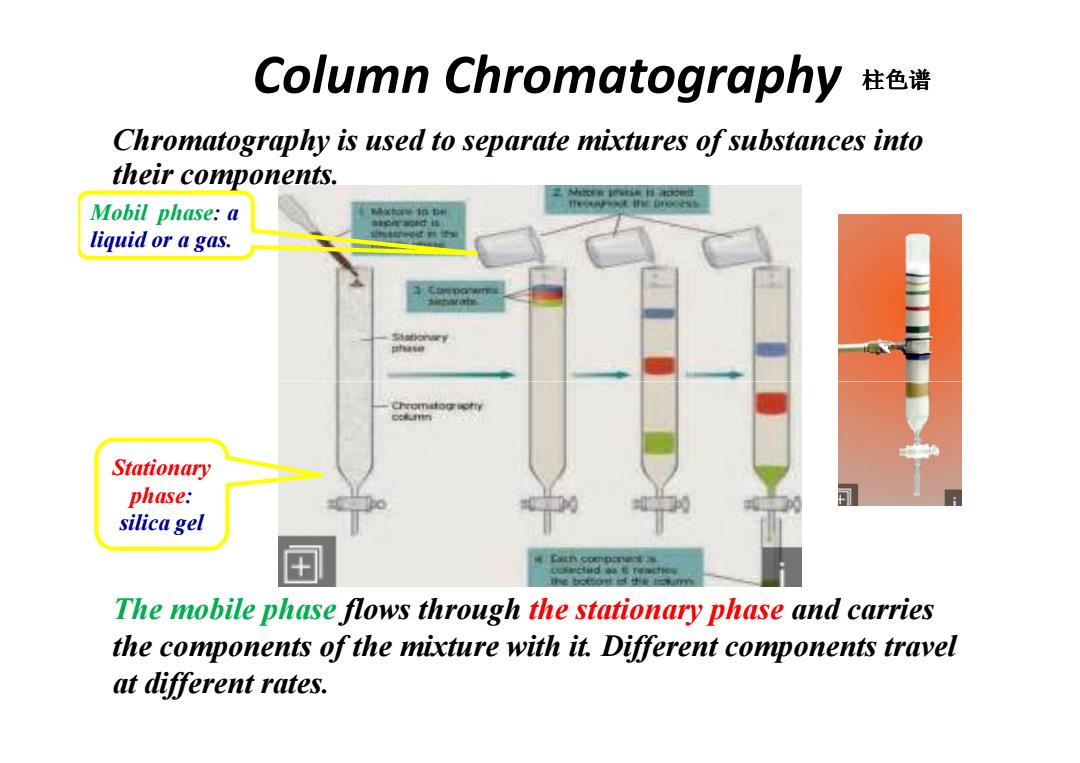
Column Chromatography 柱色谱 Chromatography is used to separate mixtures of substances into their components. ZNcen seria is incoud Mobil phase:a socton tn be 1NSMPSKNJE118E (i000545 liquid or a gas. 口s移 e6k件n Stationary phase: silica gel The mobile phase flows through the stationary phase and carries the components of the mixture with it.Different components travel at different rates
Column Chromatography Chromatography is used to separate mixtures of substances into their components. Mobil phase: a liquid or a gas. 柱色谱 The mobile phase flows through the stationary phase and carries the components of the mixture with it. Different components travel at different rates. Stationary phase: silica gel
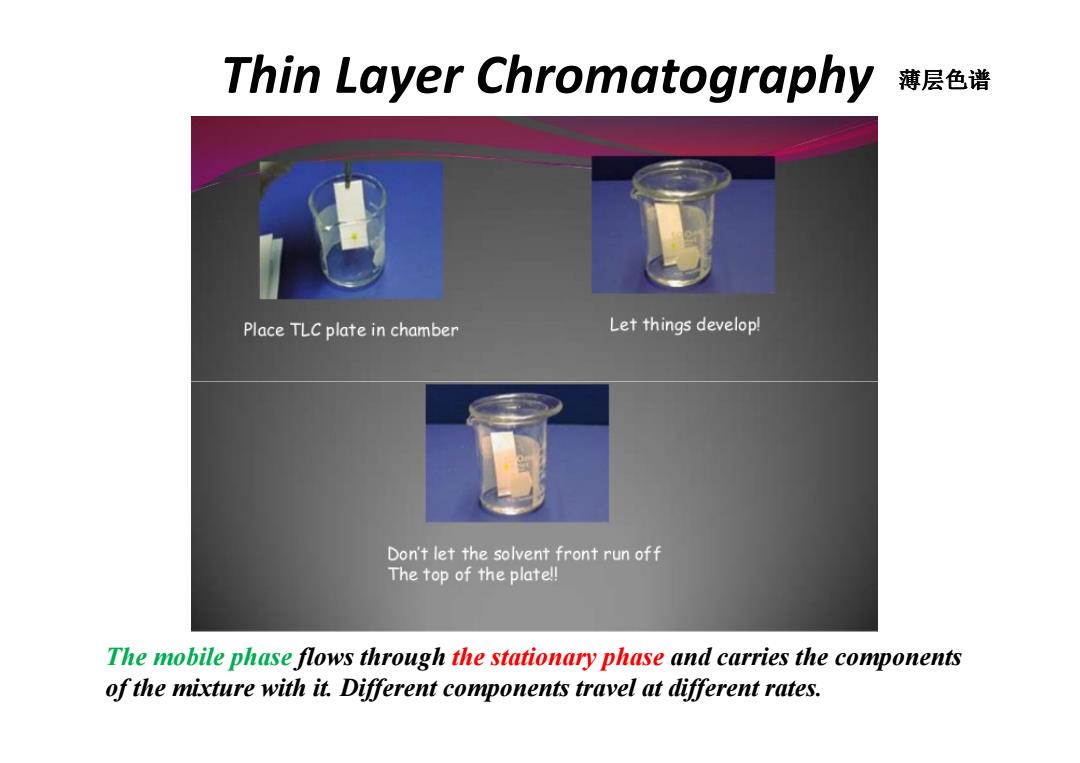
Thin Layer Chromatography 薄层色谱 Place TLC plate in chamber Let things develop! Don't let the solvent front run off The top of the platel! The mobile phase flows through the stationary phase and carries the components of the mixture with it.Different components travel at different rates
Thin Layer Chromatography 薄层色谱 The mobile phase flows through the stationary phase and carries the components of the mixture with it. Different components travel at different rates
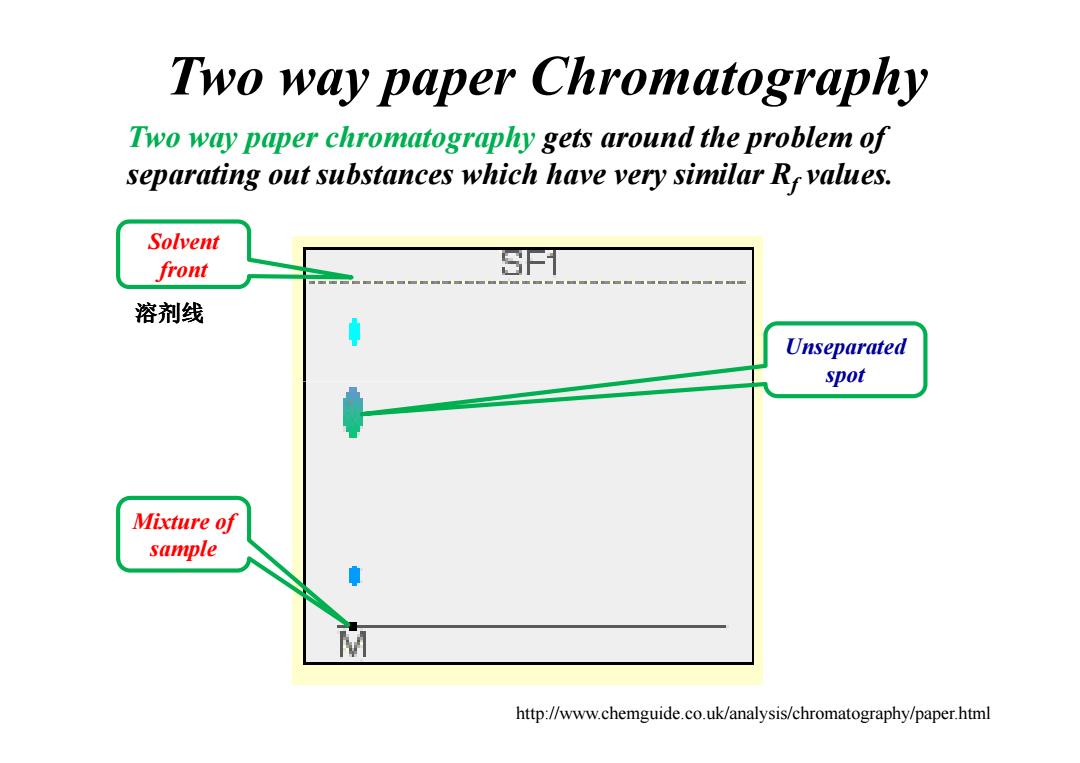
Two way paper Chromatography Two way paper chromatography gets around the problem of separating out substances which have very similar R values. Solvent front 溶剂线 Unseparated spot Mixture of sample http://www.chemguide.co.uk/analysis/chromatography/paper.html
Two way paper Chromatography Two way paper chromatography gets around the problem of separating out substances which have very similar Rf values. Solvent front 溶剂线 Unseparated spot Mixture of sample http://www.chemguide.co.uk/analysis/chromatography/paper.html

Chromatography色谱 Waiting for the paper to dry out completely,and then rotate it through 90,and develop the chromatogram again in a different solvent. SP2 Separated components Spots move with the second solvent. http://www.chemguide.co.uk/analysis/chromatography/paper.html
Chromatography Waiting for the paper to dry out completely, and then rotate it through 90 °, and develop the chromatogram again in a different solvent. 色谱 Separated components Spots move with the second solvent. http://www.chemguide.co.uk/analysis/chromatography/paper.html
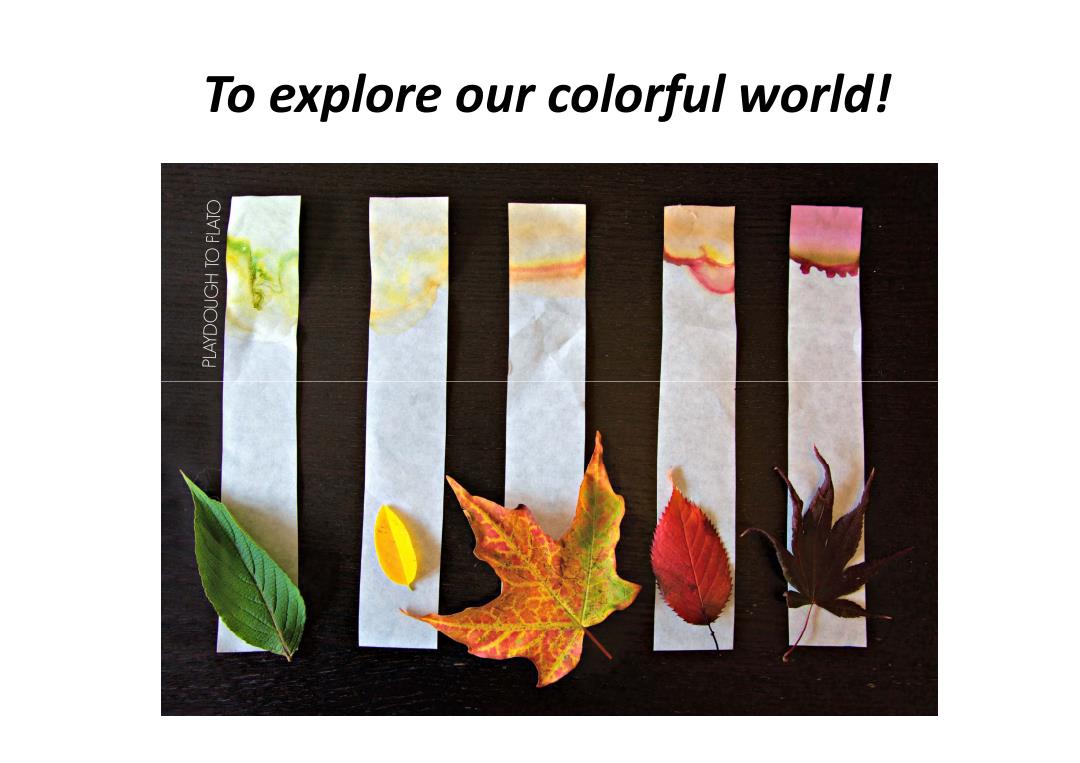
To explore our colorful world!
To explore our colorful world!
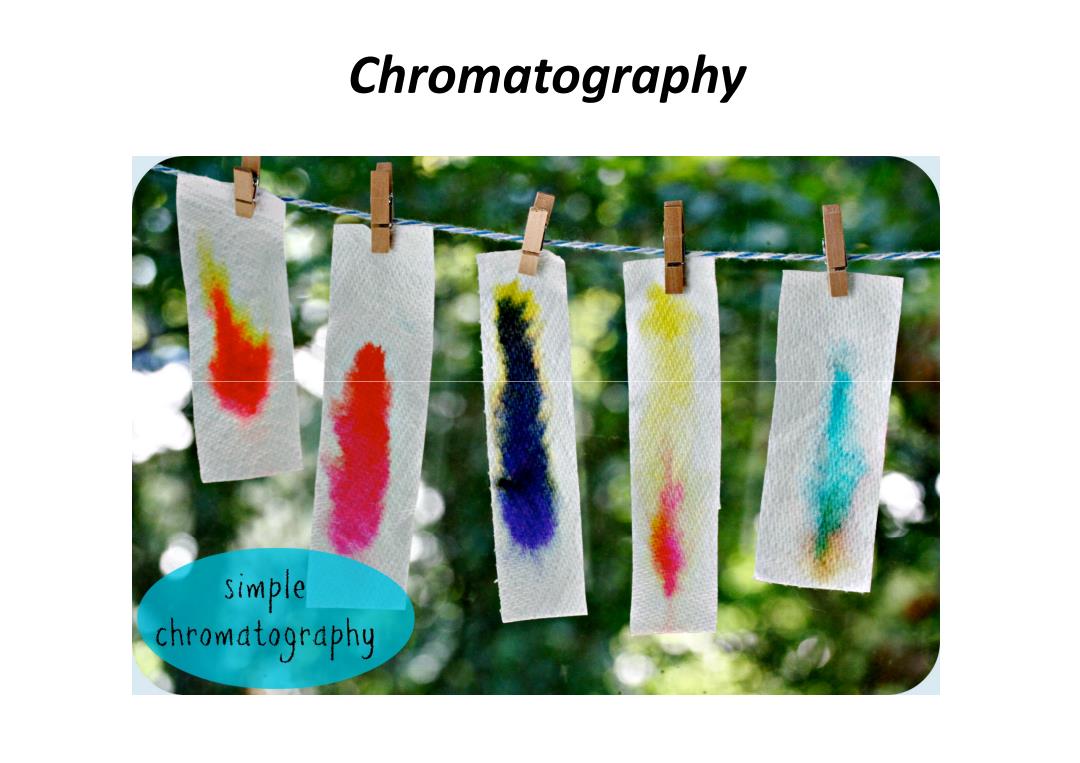
Chromatography Simple chromatography
Chromatography

The colorful season 11a1 What color dyes are in your favorite marker ink?Try paper chromatography to find out!
The colorful season
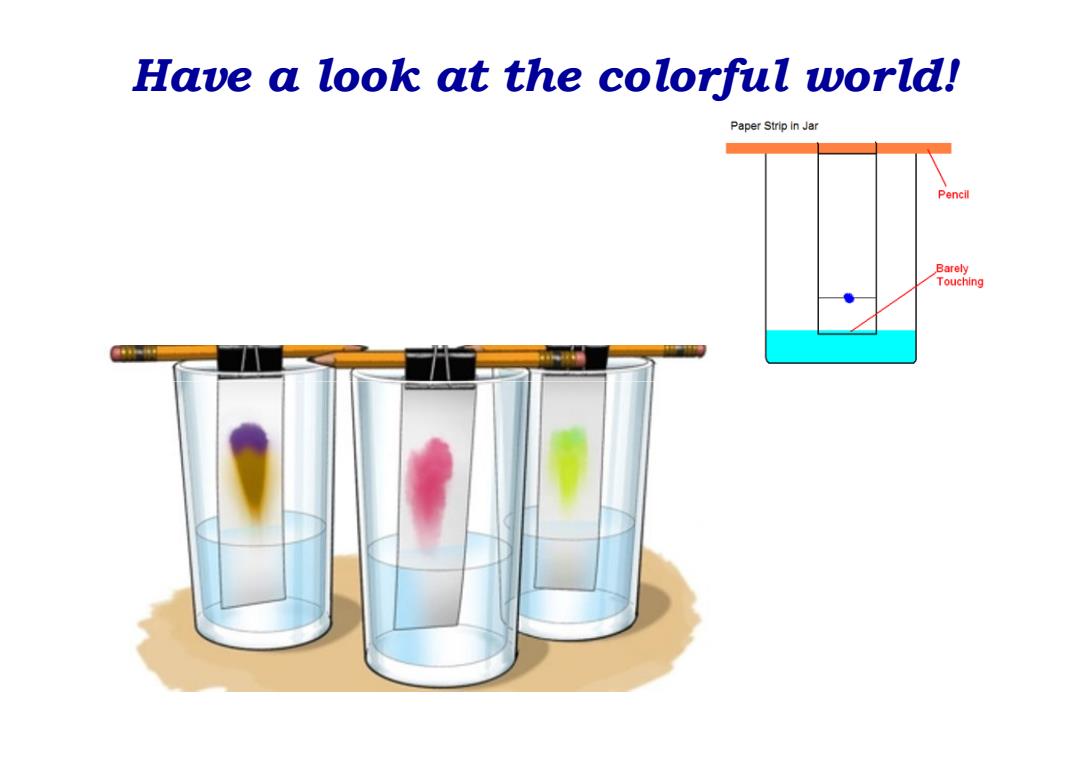
Have a look at the colorful world! Paper Strip in Jar Pencil Barely Touching
Have a look at the colorful world!
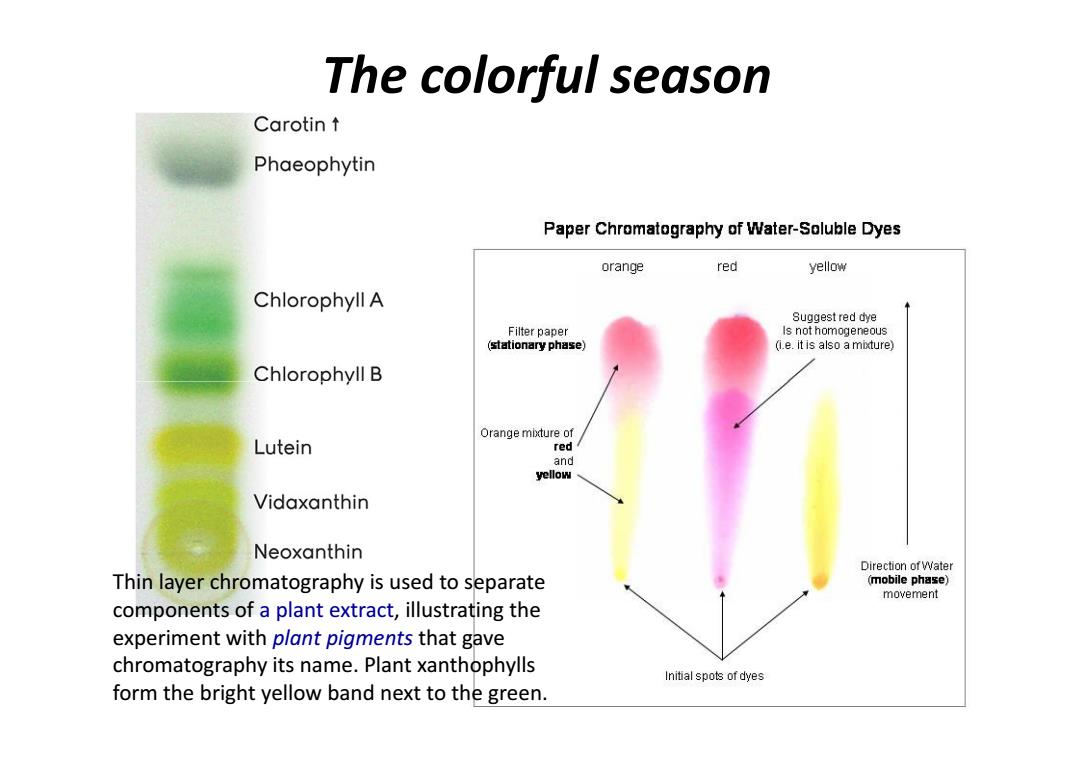
The colorful season Carotin t Phaeophytin Paper Chromatography of Water-Soluble Dyes orange red yellow Chlorophyll A Suggest red dye Filter paper Is not homogeneous (stationary phase) (i.e.it is also a mixture) Chlorophyll B Orange mixture of Lutein red and yellow Vidaxanthin Neoxanthin Direction ofWater Thin layer chromatography is used to separate (mobile phase) movement components of a plant extract,illustrating the experiment with plant pigments that gave chromatography its name.Plant xanthophylls Initial spots of dyes form the bright yellow band next to the green
The colorful season Thin layer chromatography is used to separate components of a plant extract, illustrating the experiment with plant pigments that gave chromatography its name. Plant xanthophylls form the bright yellow band next to the green